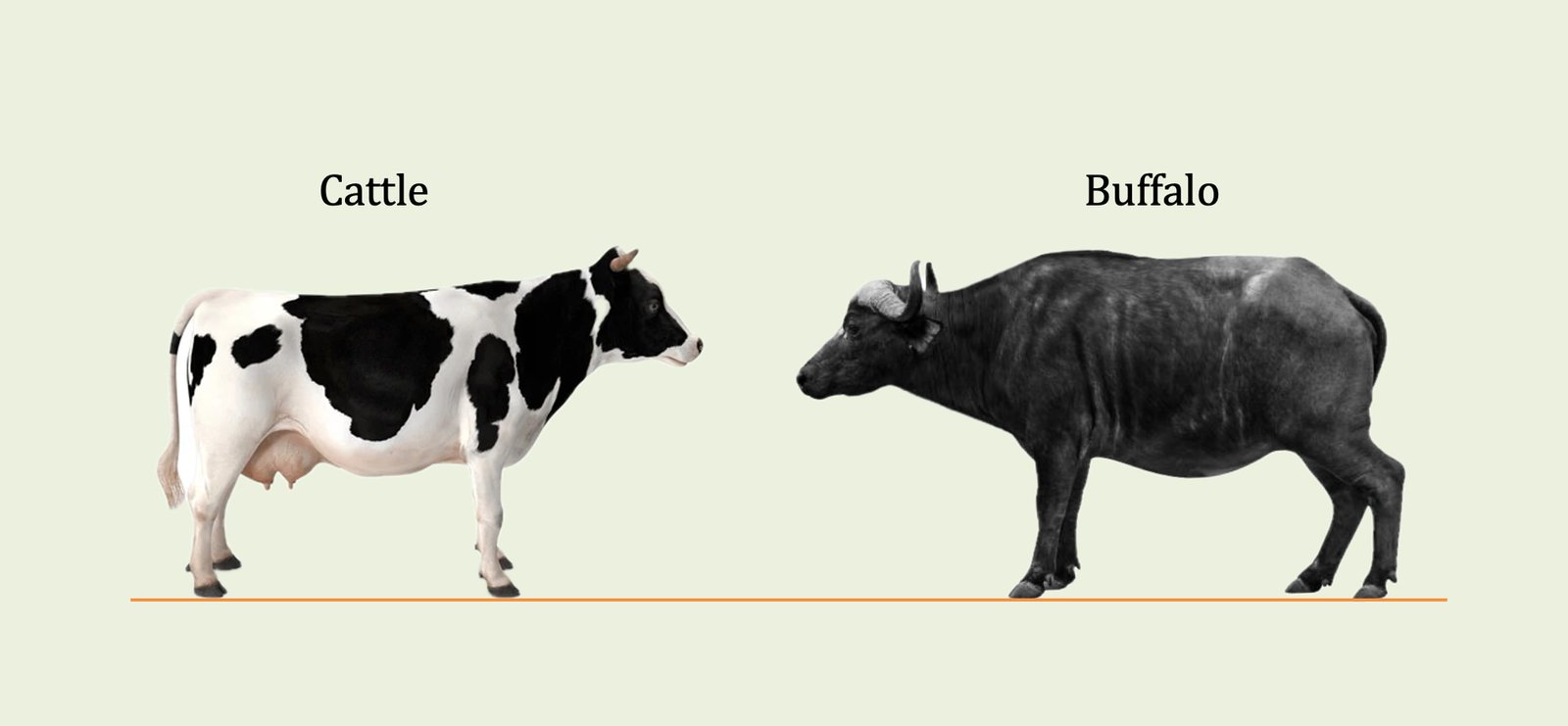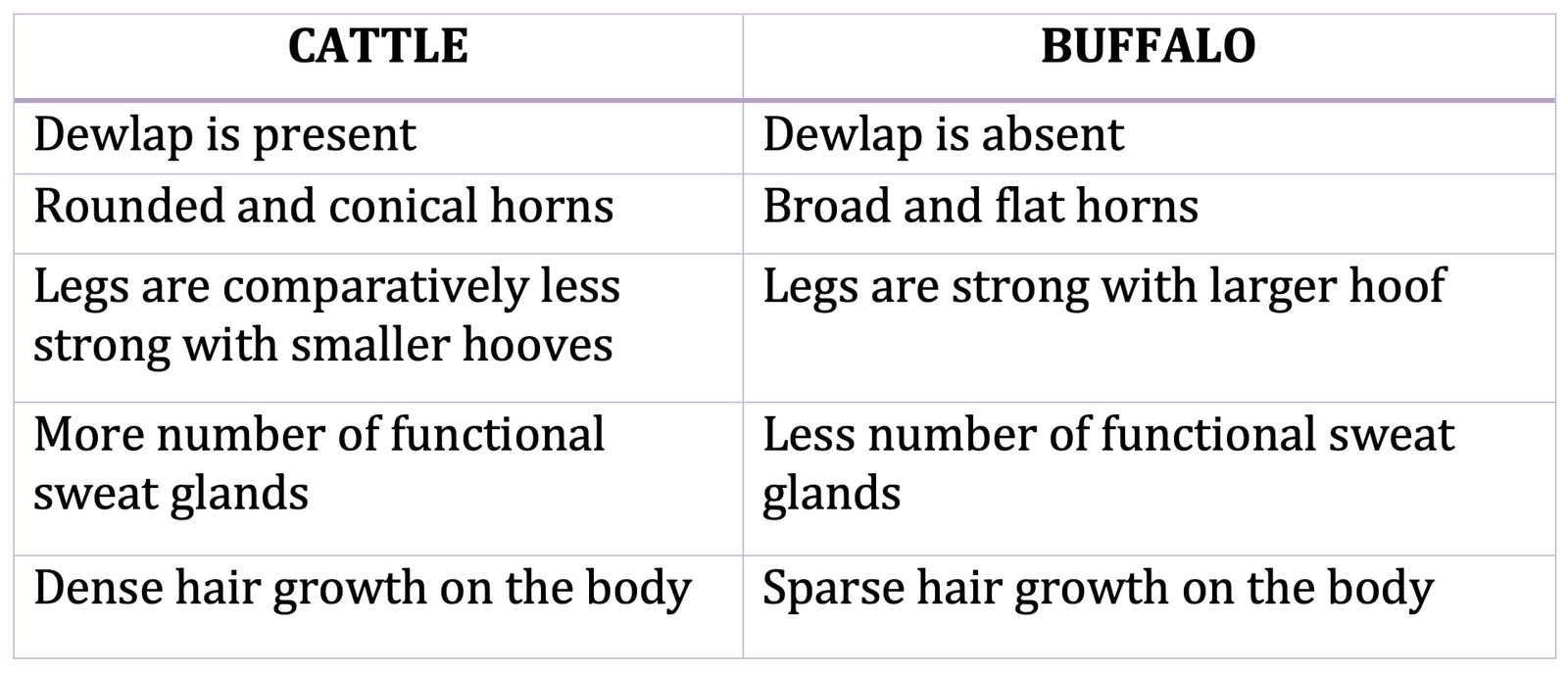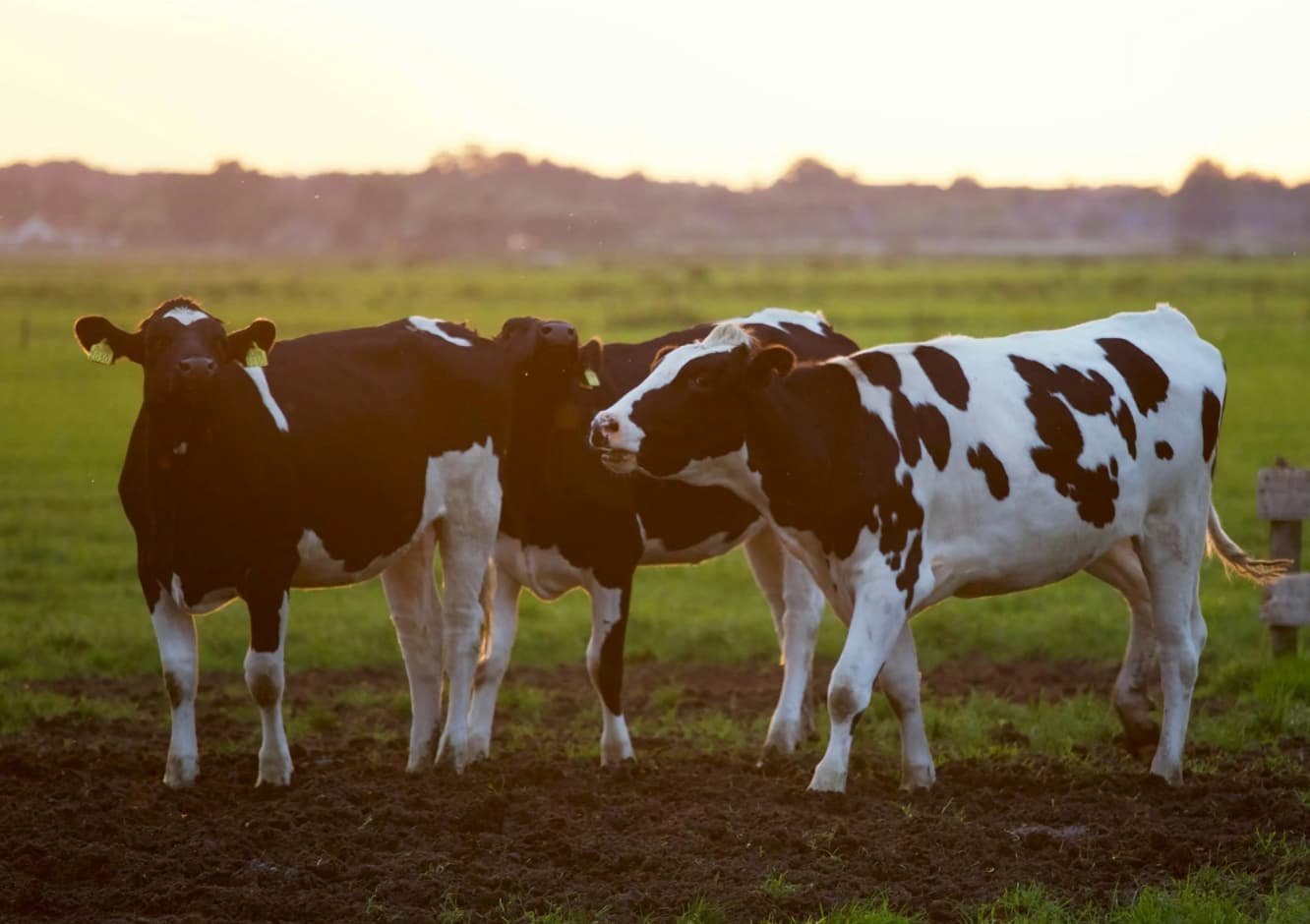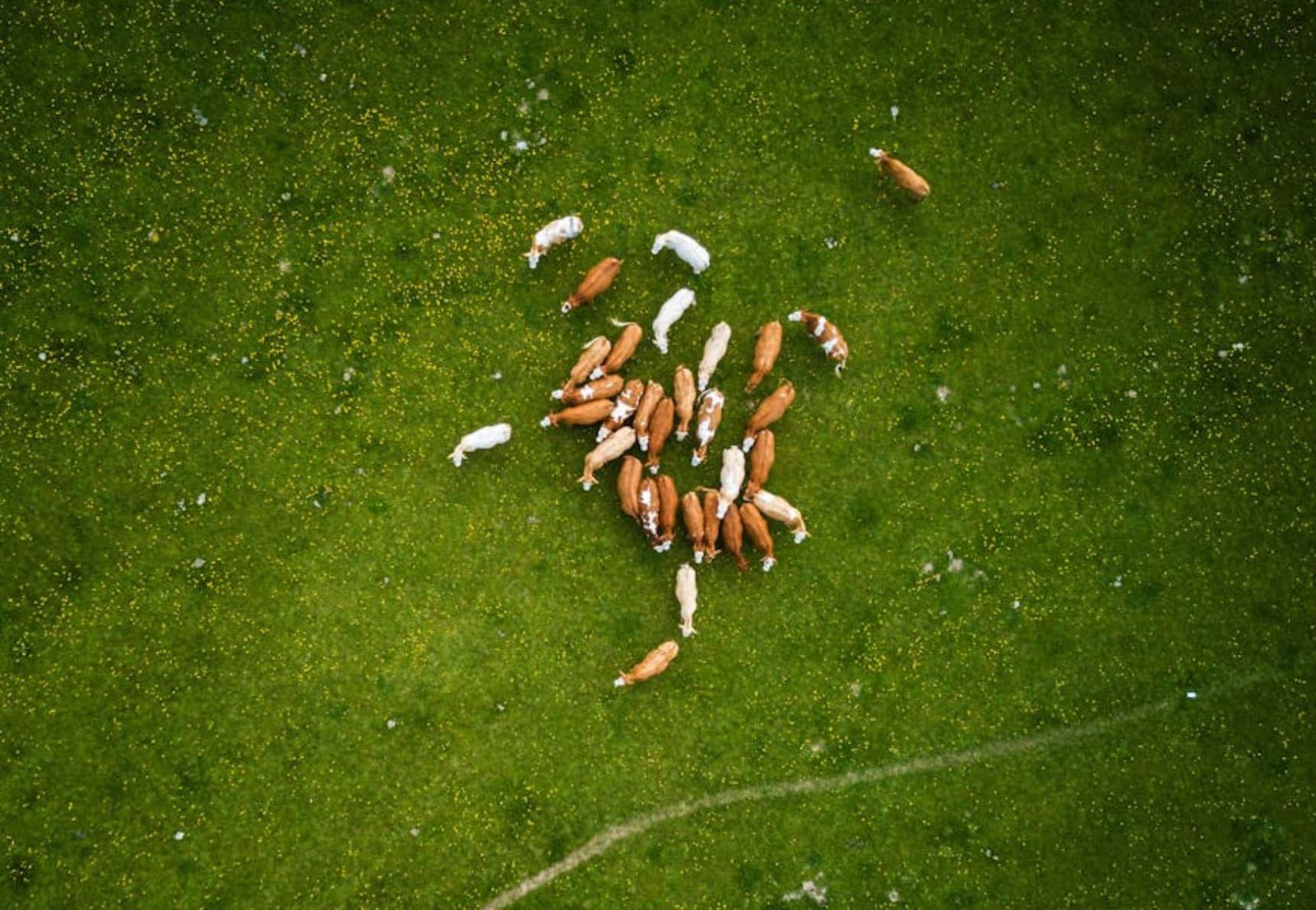CONTENT
Differences Between Cattle and Buffalo
Cattle and buffalo are both important domesticated bovines, but they exhibit several distinct differences in their physical characteristics and physiology.

Cattle
Cattle are domesticated bovines known for their adaptability to a wide range of climates and their role in dairy and meat production. They are characterized by the presence of a prominent dewlap, rounded and conical horns, and dense hair growth over their bodies.
Cattle generally have less muscular legs with smaller hooves, making them more suitable for dry and firm ground. One of the key physiological advantages of cattle is the presence of a greater number of functional sweat glands, which helps them regulate body temperature efficiently in hot weather conditions.
Buffalo
Buffalo, in contrast to cattle, are well adapted to wet and marshy environments. They usually lack a dewlap and have broad, flat horns that distinguish them from cattle.
Their legs are stronger and equipped with larger hooves, which provide better support in muddy terrains. Buffalo have sparse body hair and fewer functional sweat glands, making them more dependent on external water sources like ponds or mud wallows to cool down.
These characteristics make buffalo more resilient in tropical regions but less tolerant to extreme heat without water access.


